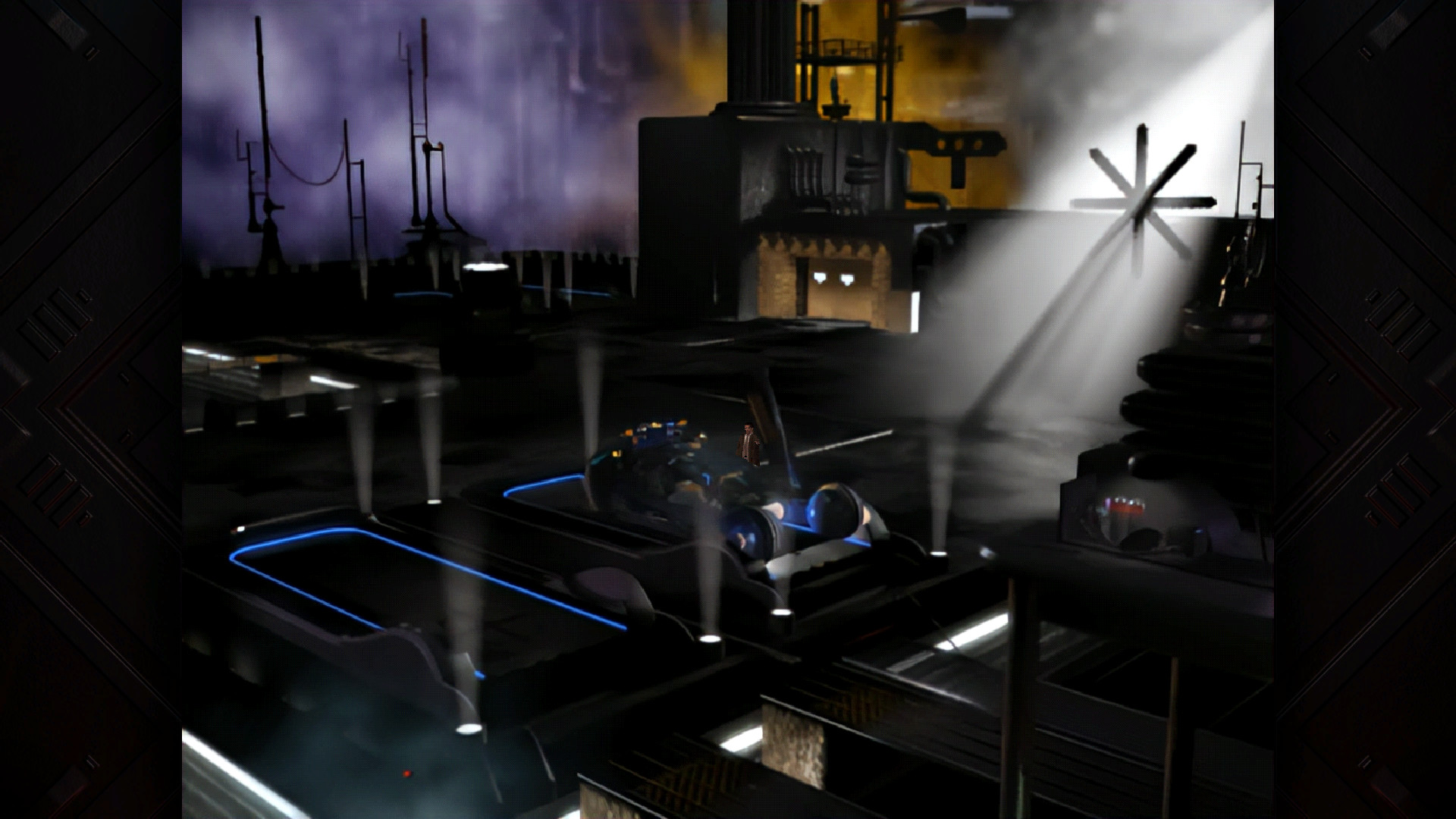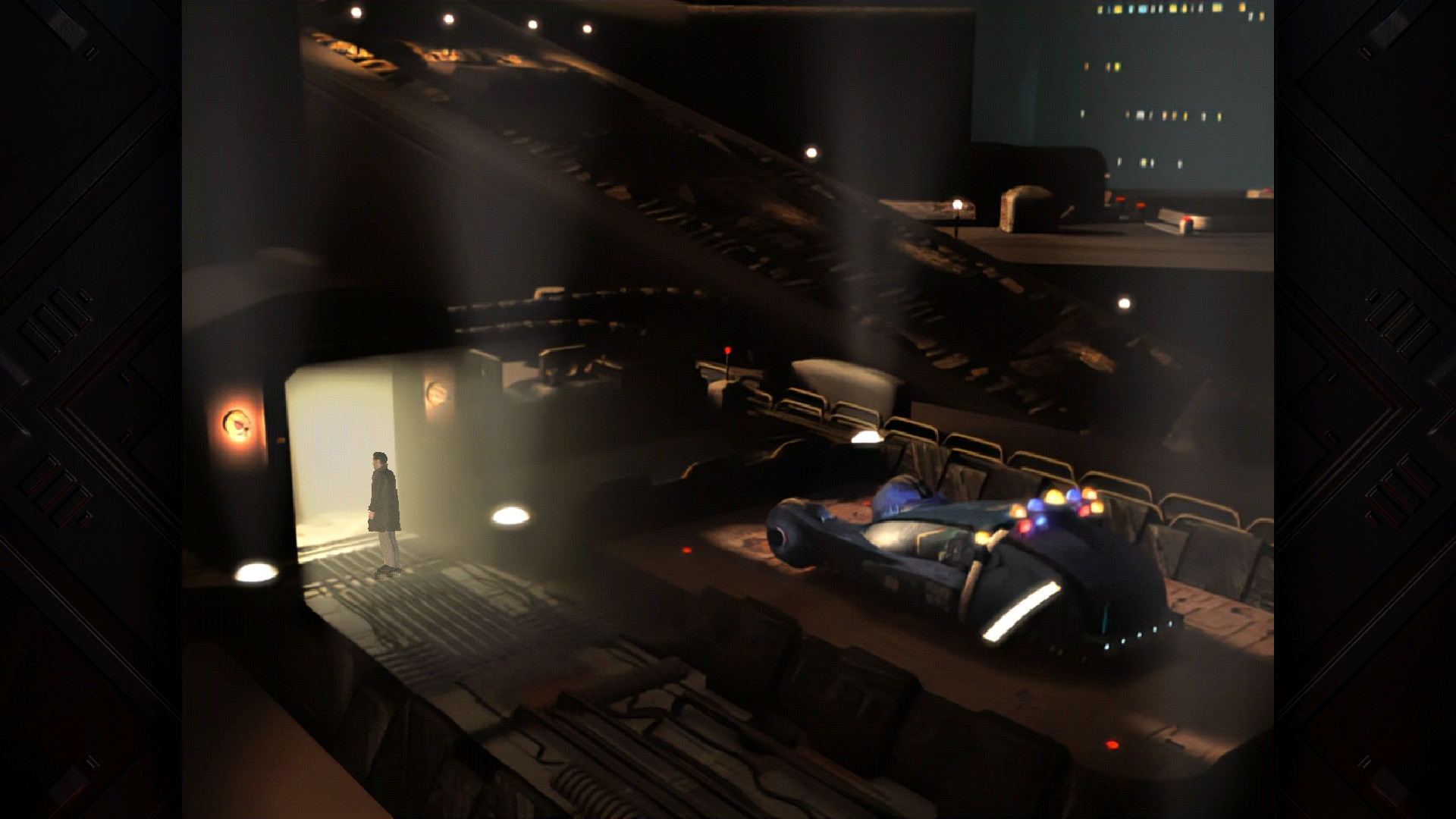Blade Runner 1997 is still the cyberpunk experience to beat
Aren’t you tired of playing copies of copies?

Ridley Scott has never worked on a videogame, but he’s directed hundreds of them by proxy. Blade Runner and Alien have provided coordinates for development teams to steer towards for decades, defining the look, feel, and sound of interactive sci-fi as we know it today. Without them, there would be no Mass Effect, no Homeworld, and certainly no Cyberpunk.
Yet this process is not lossless. Every time Blade Runner is copied, some of the original’s idiosyncrasies fade, and what was once a sharp and precise vision of the future inevitably becomes smudged and fuzzy. The neon signs and verticality of a disintegrating Los Angeles are usually there—alongside a vague meditation on what it means to be human, and whether it can be mimicked. But wouldn’t you rather return to the source, just once? Play the real thing, and not a replicant?
When Command & Conquer studio Westwood pitched its Blade Runner game, the movie was already ancient history—almost a decade and a half old. And the rights for its fiction may as well have been off-world, scattered between actors with residuals and investors Scott had bled dry during production. But these factors, which might have struck many developers as prohibitive, were the making of Westwood’s adaptation.
Scott free
Most movie tie-ins are undiluted fan service; this approach is the opposite.
Since the studio couldn’t use any preexisting footage or audio, its Blade Runner game is permanently situated around the corner and up the road from Scott’s film sets. You don’t play Deckard, but a stand-in replicant hunter named McCoy (who, as his name suggests, has similar issues with working out whether his memories are real or not). And your story plays out in parallel to the plot of the movie, without ever passing in front of Scott’s camera.
As McCoy, you exist in tantalising proximity to the cast and environs of a classic: visiting the pyramid of Tyrell Corporation, but not being allowed in to see the big man; showing up at the Yukon Hotel after Deckard has already turned the place upside down; hearing the voice of that sweet sucker JF Sebastian on an answering machine. If you’re very lucky, you might catch a glimpse of Harrison Ford in the background of a photograph, brandishing a snake scale amid the market stalls of Animoid Row.
Most movie tie-ins are undiluted fan service; this approach is the opposite, keeping you forever grounded and hungry for more of the characters you’ve seen on-screen. Yet it also fulfils an implicit fantasy of longtime Blade Runner fans—to step outside of the frame and explore an LA that only ever existed on the backlot of Warner Brothers.
The fact that Westwood’s writers stayed in their own lane only contributes to the game’s value as a companion piece. No matter what turns you take as a player, its branching narrative never contradicts the source material, nor steps outside city limits into the kipple of tonal dissonance. Its detective story is related to but distinct from the one players already knew, extending the universe in convincing fashion. It’s the very restrictions of the license that pushed Westwood’s team to stand on their own two feet as storytellers, confidently riffing on Scott’s creation rather than retreading its rainslick streets.
Keep up to date with the most important stories and the best deals, as picked by the PC Gamer team.






LA noir
The development of Blade Runner 1997 is even more baffling and unlikely when you consider its genre. Full Throttle, the commercial high point for LucasArts adventure games, had already been and gone—and Westwood’s point ‘n’ click peers were struggling to adapt to a PC audience obsessed by the new promise of 3D. This was not the time to invest in an unusually expensive take on an old-fashioned form.
Yet Westwood rivalled id Software for its use of cutting-edge tech, folding in 20,000 instances of motion capture. It looped animations in the background of its scenes, and even folded-in crude dynamic lighting. These innovations meant the studio could recreate not only the sight of a flying car landing in a busy street, but also the highly specific mixture of spotlights, spinning fans and fog that lent Blade Runner its distinct noir atmosphere.
In 2022, what’s more striking is the way the noir bleeds into Blade Runner’s mechanics, too. While many adventure games of the 90s are notorious for their obtuse puzzle logic, this one stands up as a gumshoe investigation. Whenever you get stuck, it feels natural enough to circle back to crime scenes, scour an old photograph, or download new leads from the computer shared by your colleagues back at HQ (otherwise known as Union Station, one of Blade Runner’s few real LA landmarks). Rigorous police work will always turn up clues, and following them up involves visiting new locations to soak in another set of sumptuously moody background screens.
Fair warning: the investigation more or less breaks down in the third act. In-keeping with film noir tradition, McCoy’s personal life catches up with his professional life, the case deteriorates into chaos, and events come to a head. There are multiple endings available, but none in which our protagonist escapes becoming a hot mess and embarrassment to the force.
But that chaos—a sense that your control over the story is slipping—is a source of endless fascination for fans of this game. Dig into wikis and interviews and you’ll discover that Blade Runner 1997 is constantly changing just beyond your eyeline. Your fellow cop, Crystal, moves in and out of frame as if player-controlled herself, investigating at a pace unrelated to your own discoveries. Key characters are randomly selected as human or replicant at the beginning of each playthrough, unbeknownst to you. And suspects can be apprehended or lost depending on whether you take a left or right turn on a given screen. Above all, there’s a sense that time is ticking away regardless of your progress, fostering a powerful sense of unease and uncertainty—the same feeling that was first seared onto film all those years ago.
As Fraser explained in the summer, you might want to steer clear of Blade Runner Enhanced Edition. Ironically, while the original game benefitted from the lack of a box office deadline (the movie’s release having long since passed) the new version was rushed out for Blade Runner’s 40th anniversary, and still isn’t in an ideal state. But thankfully, anyone who buys it on Steam now gets the classic edition for free as a bonus. It’s an easy choice: who wants a flawed copy when you can have the real thing?
Jeremy Peel is an award-nominated freelance journalist who has been writing and editing for PC Gamer over the past several years. His greatest success during that period was a pandemic article called "Every type of Fall Guy, classified", which kept the lights on at PCG for at least a week. He’s rested on his laurels ever since, indulging his love for ultra-deep, story-driven simulations by submitting monthly interviews with the designers behind Fallout, Dishonored and Deus Ex. He's also written columns on the likes of Jalopy, the ramshackle car game. You can find him on Patreon as The Peel Perspective.

